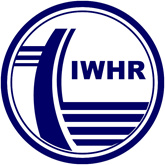Editors-in-Chief: Hao Wang, Asit K Biswas and Wenhong Cao
Journal list menu
River is a hydrology journal publishing open access research on the engineering and practical applications of river systems and traditional water-related areas. The journal scope includes geotechnical engineering and dam construction, estuarine and offshore engineering, water culture, policy, and security, and water resources including environment, ecology, disaster, hydraulics, and irrigation.
Introducing River.
A new open access journal presenting the engineering and practical applications of river systems, in addition to research on traditional water-related areas.
River welcomes research spanning the following areas:
- Water resources, water environment, water ecology, water disaster, hydraulics, irrigation
- Geotechnical engineering and dam construction technique
- Estuarine and offshore engineering
- Water culture, policy, and security
River is now indexed by Scopus.
Why publish in River?
- Make your work accessible to everyone!
- Submit with confidence.
- Get your work out to the world quickly, with no compromise on quality.
- Spend less time formatting and more time out in the field!
- You’ll retain copyright of your work.
- Steering the water policies!
- Make a global impact!
- There is no cost for publishing open access.
- The breadth of River’s coverage.

Receive the latest research from River – create a FREE Wiley Online Library account and register for Content Alerts today.
- Get personalized alerts at a frequency that suits you.
- Keep track of papers of interest with citation alerts.
- Easily save content to manage your reading list.
- Save searches to review later.
Articles
Study of hydrothermal characteristics of large‐scale water conveyance trunk canals in seasonally frozen ground regions under the influence of different initial water contents
- 28 April 2024
Flood modeling in the Ba River basin using a coupled hydrodynamic model—MIKE FLOOD
- 16 April 2024
Assessing the impacts of urbanization and climate change on urban drainage system
- 16 April 2024
Development of a hazard risk map for assessing pedestrian risk in urban flash floods: A case study in Cúcuta, Colombia
- 8-23
- 14 March 2024
Graphical Abstract

This study introduces a cutting-edge approach to assess pedestrian risk in urban flood scenarios, applied to Cúcuta, Colombia, using a calibrated hydrological model and image recognition algorithms. It reveals a notable increase in risk with extended return periods, emphasizing the need for dynamic safety measures in urban planning. The findings set a precedent for applying this methodology in similar urban settings to improve pedestrian safety during flood events.
Surface movement detection and stability evaluation of a loose fine‐grained soil slope during reservoir operation: A case study in NE reservoir
- 47-58
- 13 March 2024
Graphical Abstract

The surface movement characteristics before and after the occurrence of landslides in the NE reservoir in the region scale were detected and interpreted by Sentinel-2 time series images. Experimental studies were conducted to investigate the geotechnical properties of the fine-grained soil. The slope stability was evaluated for a typical slope profile considering the rising water level using the extended Bishop's simplified method, which was implemented in the code STAB-UNSAT.
A review on effects of human activities on aquatic organisms in the Yangtze River Basin since the 1950s
- River
- 104-119
- 28 August 2022
The 2022 extreme drought in the Yangtze River Basin: Characteristics, causes and response strategies
- River
- 162-171
- 5 December 2022
Assessment of meander‐bend migration of a major distributary of the Ganges River within Bangladesh
- River
- 240-255
- 15 November 2022
Graphical Abstract

The offtake of the Arial Khan River, an important distributary of the Ganges River, shifts periodically. This shifting of the offtake exerts an important control on the morphology of the river itself. The upper reach of the river is found to be morphologically more unstable than the middle and lower reaches and the bend migration rate is also found to be higher in this reach. An envelope curve depicting the relation between the relative curvature of a bend and its migration is developed for the first time for any Bangladesh river.
Sedimentation and regulation technologies in the Three Gorges Reservoir
- River
- 123-132
- 7 December 2022
Graphical Abstract

Sedimentation is one of the key technical problems present throughout feasibility demonstration, design, construction, and operation of the Three Gorges Project. Since the Three Gorges Reservoir began impoundment operation in 2003, important progress has been made in sedimentation and regulation technologies through systematic research and practices. This paper reveals the asynchronous propagation pattern of flood and sediment peak inflows, sediment movement in the backwater area during drawdown period, sediment flocculation, and sediment deposition that compromises the flood control reservoir storage, and puts forward new sediment regulation techniques, including sediment peak discharge regulation during flood season, siltation reduction in the backwater area during drawdown period, dynamic adjustment of the reservoir level during flood season, and joint sediment regulation in cascade reservoirs. A real-time monitoring, forecasting and dynamic regulation platform for water and sediment inflow in the Three Gorges Reservoir was developed; a new mode of dynamic sediment regulation called “regulating sediment for greater benefits” is proposed, which addresses the constraints of sedimentation on the optimal operation of Three Gorges Reservoir. By enabling more flexible operation, this mode improves the process and pattern of sedimentation, ensures the safety of reservoir operation, and significantly augments the comprehensive benefits of the Three Gorges Reservoir.
Effect of water depth and waterway obstructions on the divergence and confluence areas of Dongting Lake and the Yangtze River after the operation of the Three Gorges Project
- River
- 88-108
- 3 January 2023
Recent advances in the investigation of a slow‐moving landslide in the Three Gorges Reservoir area, China
- River
- 91-103
- 17 July 2022
The 2022 extreme drought in the Yangtze River Basin: Characteristics, causes and response strategies
- River
- 162-171
- 5 December 2022
Resolving the Ganges pollution paradox: A policy‐centric systematic review
- River
- 126-141
- 28 February 2023
A review on effects of human activities on aquatic organisms in the Yangtze River Basin since the 1950s
- River
- 104-119
- 28 August 2022
Strategies for a resilient, sustainable, and equitable Mississippi River basin
- River
- 336-349
- 20 September 2023
Irrigation water use efficiency: A water balance approach
- River
- 142-148
- 10 November 2022
Graphical Abstract

A water use framework that covers four levels of water management infrastructure: the water source, bulk conveyance system, the irrigation scheme, and the irrigation farm can be used to improve irrigation efficiency. The water balance approach can be applied at any level, within defined boundaries, or across all levels to assess performance within the whole Water Management Area.
Comprehensive evaluation and stability analysis of ecosystem quality of Yellow River Basin during 1980–2019
- River
- 239-248
- 14 May 2023
Using the Soil and Water Assessment Tool (SWAT) to quantify the economic value of ecosystem services
- River
- 173-185
- 28 May 2023













